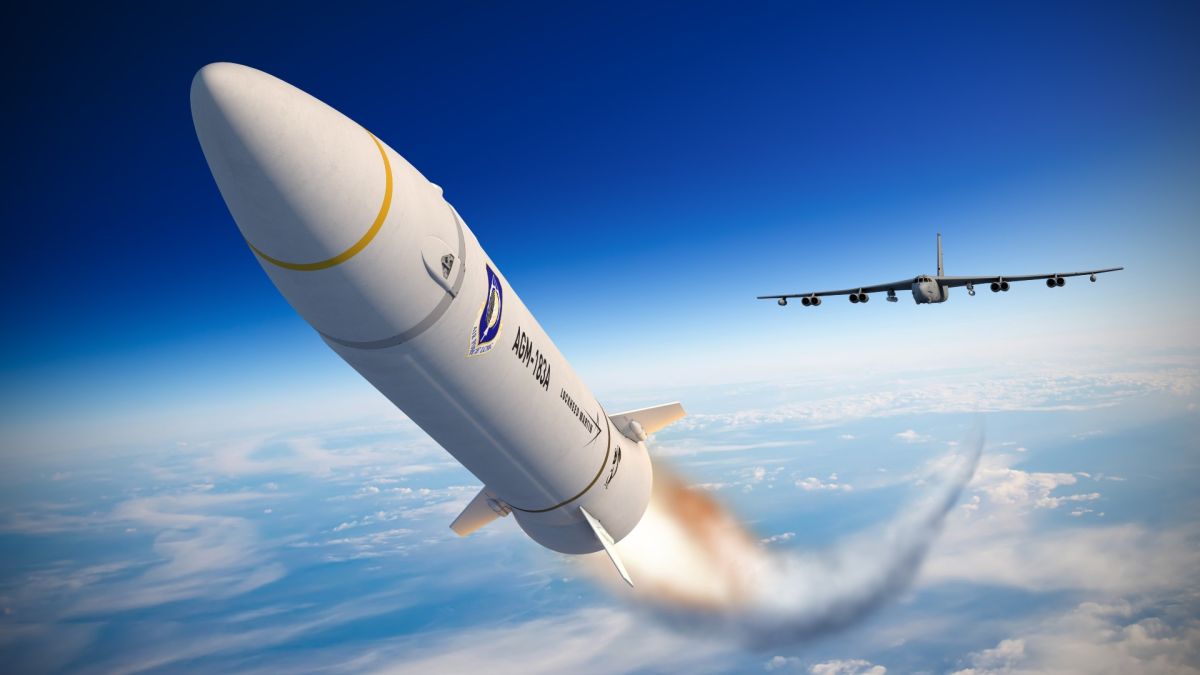
www.space.com
US Air Force launches 1st operational hypersonic missile
The United States Air Force has successfully tested its first prototype hypersonic missile, the AGM-183A Air-launched Rapid Response Weapon, or ARRW.
Politics
The United States Air Force (USAF) has successfully tested its first prototype hypersonic missile.
The service's new AGM-183A Air-launched Rapid Response Weapon, or ARRW ("Arrow") is expected to be the United States military's first hypersonic weapon to reach operational status. The exact speed of the AGM-183A isn't known, although the Lockheed Martin-designed weapon is said to be based on previous test vehicles built by DARPA (opens in new tab) that have an alleged maximum speed of Mach 20, or 15,000 mph (24,000 kph).
The successful ARRW test was conducted on Friday (Dec. 9) in a training range off the coast of California, according to a USAF statement (opens in new tab) released Monday (Dec. 12). "This test was the first launch of a full prototype operational missile," officials wrote in the statement. "Following the ARRW's separation from the aircraft, it reached hypersonic speeds greater than five times the speed of sound, completed its flight path and detonated in the terminal area. Indications show that all objectives were met."
"The ARRW team successfully designed and tested an air-launched hypersonic missile in five years," Brig. Gen. Jason Bartolomei, Armament Directorate Program Executive Officer, said in the USAF statement. "I am immensely proud of the tenacity and dedication this team has shown to provide a vital capability to our warfighter."
According to the U.S. Air Force, the missile is designed to "hold fixed, high-value, time-sensitive targets at risk in contested environments," meaning it will be used to target pre-determined assets on the ground such as fixed missile sites, radar stations, air defense installations, infrastructure facilities or even adversary headquarters buildings — basically anything important in a battlefield environment that can't be moved and needs to be destroyed quickly.
The AGM-183A has been undergoing flight testing since April 2021, but a series of unsuccessful tests in which the missile's booster failed to fire cast some doubts on the program. "You obviously don't wouldn't buy something that doesn't work," the Air Force's acquisition said about the program in July 2022, according to Breaking Defense (opens in new tab).
Now that the ARRW has successfully flown, it's likely the service could reevaluate its plans to scrap planned purchases of the AGM-183A.
While the Department of Defense does not typically announce these tests ahead of time, aircraft spotters in Southern California spied a B-52H airplane carrying the AGM-183A toward its test range last week.
The AGM-183A is what is known as a boost-glide vehicle, which refers to warheads or projectiles that glide toward their targets after being lofted by a rocket booster. The ARRW is carried under the wing of an aircraft, such as the B-52H bomber that lofted it for this test flight, before it is released. A solid rocket booster then ignites, lifting the missile to a specific altitude and speed before its payload fairings open and release the wedge-shaped boost-glide vehicle inside.
These boost-glide vehicles do not then fall along predictable arc-shaped trajectories like ballistic missiles; instead, they glide down to their targets unpowered along a flatter trajectory and are able to execute abrupt maneuvers while in flight.
This capability, along with their extreme speeds, make this class of weapons highly difficult to detect, track and defeat with current air defense systems. To that end, Department of Defense is also developing new classes of interceptors to help counter the growing hypersonic threat worldwide.
























































